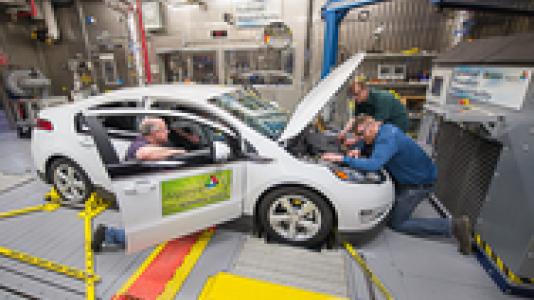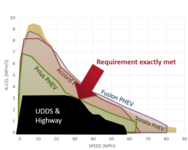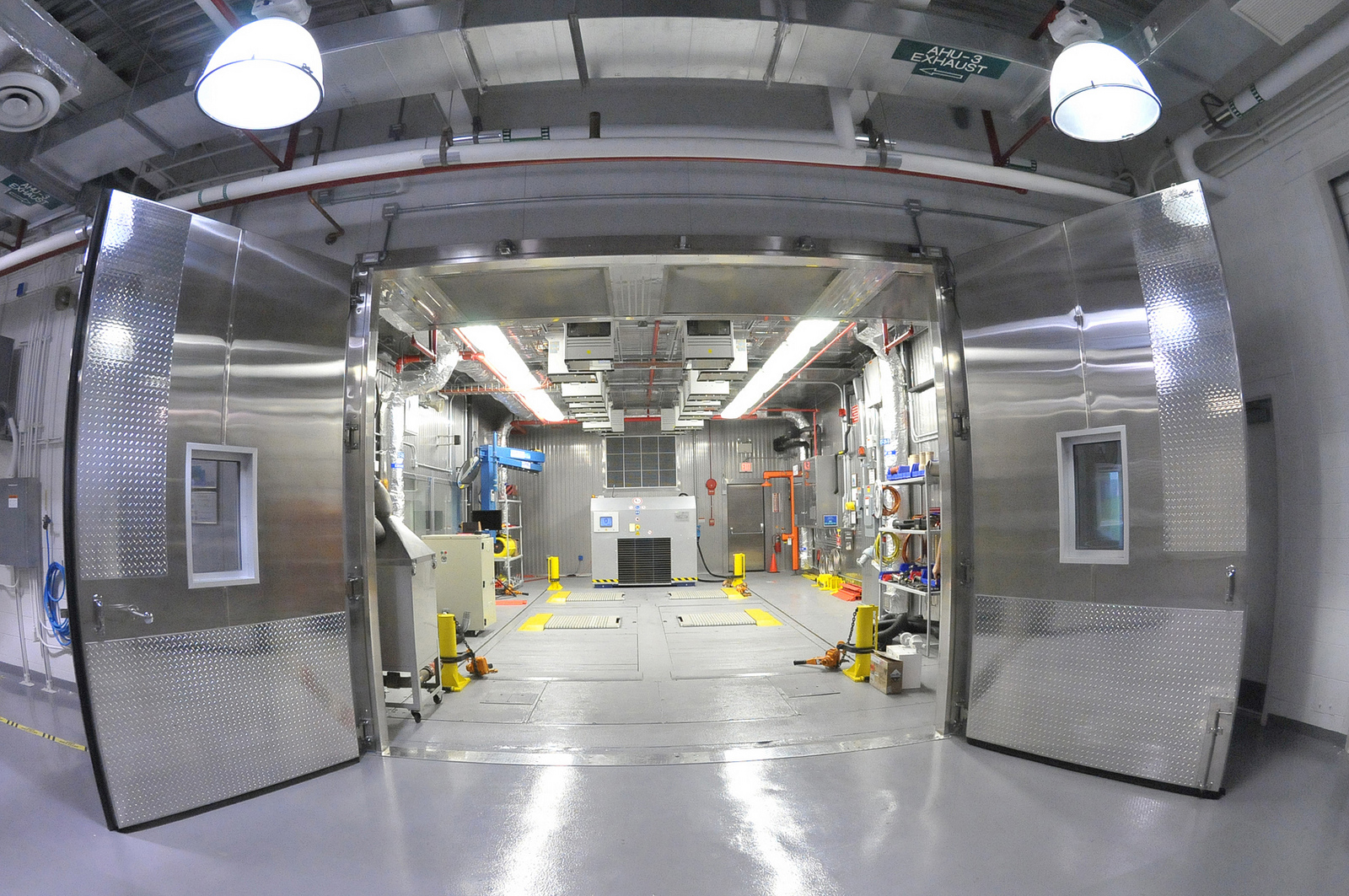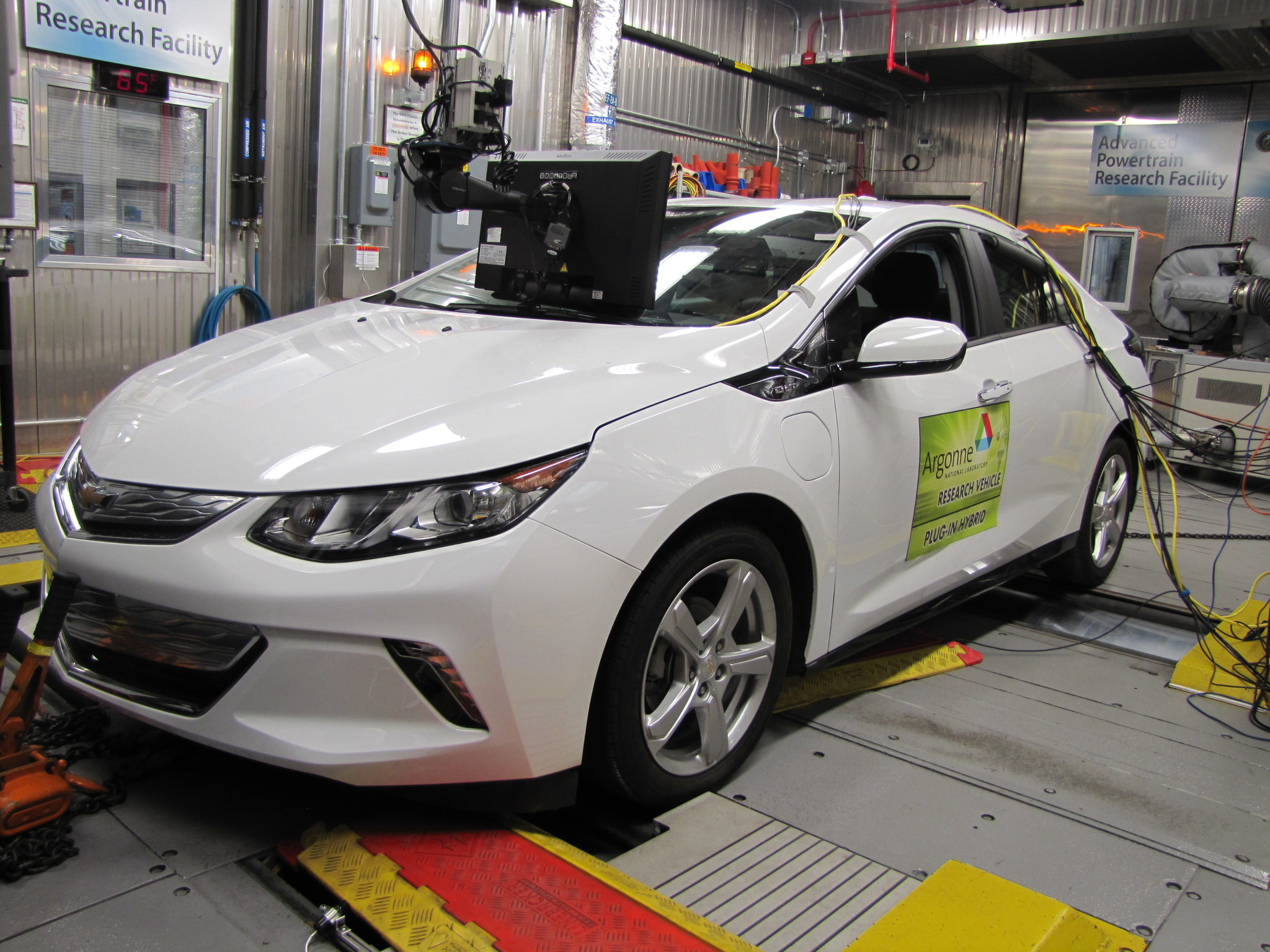
When consumers shop for plug-in hybrid electric vehicles (PHEVs), powered by an electric battery and a gas-powered engine, they often raise many questions. When do these cars drive solely under electrical or gas-engine power? How do their unique powertrains affect fuel economy and energy consumption?
Answering these questions is difficult. The number and variety of these cars has exploded in recent years, which complicates side-by-side comparisons. Performance also depends on how one drives. If one recharges the battery often and drives cautiously, the gas engine may remain unused. On the other hand, if one never charges the battery and drives aggressively, performance will lag a standard hybrid’s due to the unused battery’s added weight.
To get clear answers, researchers and regulators rely on the expertise and independence of Argonne’s Advanced Powertrain Research Facility (APRF).
A well-established track record
Argonne’s engineers at the facility have a well-established track record of analyzing vehicles holistically. Researchers routinely test PHEVs’ performance, energy consumption and tailpipe emissions. The engineers also examine how well each powertrain component – i.e., engine, battery, transmission – performs with state-of-the-art instrumentation. Finally, Argonne scientists create a blueprint of how all these components interact.
“We test vehicles with many types of drive cycles, including the five U.S. EPA cycles and beyond,” said Henning Lohse-Busch, manager of Argonne’s Vehicle Systems Research Group. “We also devise special tests to map the efficiencies and operational limits of vehicle components.”
Finding the electric envelope
All PHEVs operate differently. How they respond as driving conditions change profoundly influences the amount of fuel they use. Blended PHEVs, which rely on a battery and a gas engine, have clear speed and acceleration limits, beyond which their gas engines will turn on to assist the electric motor. Not all PHEVs are blended; the Chevy Volt is different because it can drive under full power in depleting mode – i.e., while the batteries are still charged.
If one tests only the city and urban cycles, these vehicles may seem to always operate electrically.
“This shows specific envelopes for these cars,” said Argonne’s Lohse-Busch. “The Toyota Prius can accelerate well at low speed, but around 30 miles per hour it has just enough power to stay electric. And if it is driven faster, the engine will engage.” The boundaries of the other three cars are slightly wider.
When driven more aggressively, following the EPA’s so-called US06 cycle, each vehicle’s engine assists in various ways. The Ford Fusion PHEV relies more on electricity than the first generation Prius PHEV. While the Prius has half of the available electric energy of the Ford Fusion PHEV, it takes longer to use it. In the real world, the Prius uses its battery less if the owner often doesn’t drive very far between recharging.
The relationship between whether PHEVs use batteries or their engines determines the extent to which they reduce fuel use. Predicting PHEV fuel consumption is a challenge that Argonne researchers have tackled.
To do this, Argonne researchers first tested PHEVs extensively at the APRF in hot and cold conditions. They then predicted the PHEVs’ relative battery use from these results and the U.S. Department of Transportation statistics on driving distances.
Argonne’s results were confirmed as accurate when compared to the limited data from car manufacturers. The research should help refine predictions of efficiencies for all PHEVs as well as enhance certification procedures.
Plugged into industry
Such precision has allowed Argonne engineers help many organizations develop and update codes and standards for emerging vehicle technologies. For example, Argonne included the techniques discussed above in the Society of Automotive Engineers’ (SAE’s) recommendations for measuring the performance of PHEVs and standard hybrids (J1711), among others.
Argonne’s leadership in this area has also led to many successful partnerships with businesses and startups around the world. “We test all types of vehicles, but our expertise is in hybrids,” said Lohse-Busch. “So FedEx came to us to help test and optimize the battery power of its fleet of electric delivery vans in order to reduce costs.”
Self-driving cars and the grid
Today Argonne researchers are evaluating the powertrain efficiencies of modern vehicles’ autonomous driving features. Researchers find Argonne’s closed and controlled campus and its upgraded communication and infrastructure ideal for evaluating autonomous vehicles.
The APRF is also performing hardware-based research on how grid-connected vehicles interact with the future smart grid in partnership with Argonne’s EV Smart Grid and Interoperability Center.
THE DOWNLOADABLE DYNAMOMETER DATABASE
![]()
This web-based portal to Argonne test data is designed to provide access to dynamometer data normally too expensive for most research institutions to generate. Derived from investigative studies into advanced vehicle technology and funded by the U.S. Department of Energy, the data is intended to enhance the understanding of vehicle system-level interactions of advanced vehicle technologies for researchers, students, and professionals engaged in energy efficient vehicle research, development and education.
The database is a public repository of independent vehicle test data that provides the high level of detail useful in the research community. Test vehicles range from conventional vehicles, hybrid electric vehicles, plug-in hybrid vehicles and battery electric vehicles as well as alternative fuel vehicles (hydrogen, natural gas, ethanol…). Typically, vehicle and component level data is generated from standard transient test cycles in temperature conditions of 20°F, 72°F and 95°F with 850 W/m2 of radiant sun energy.
Download data for individual vehicles.
For more information contact d3info@anl.gov.


